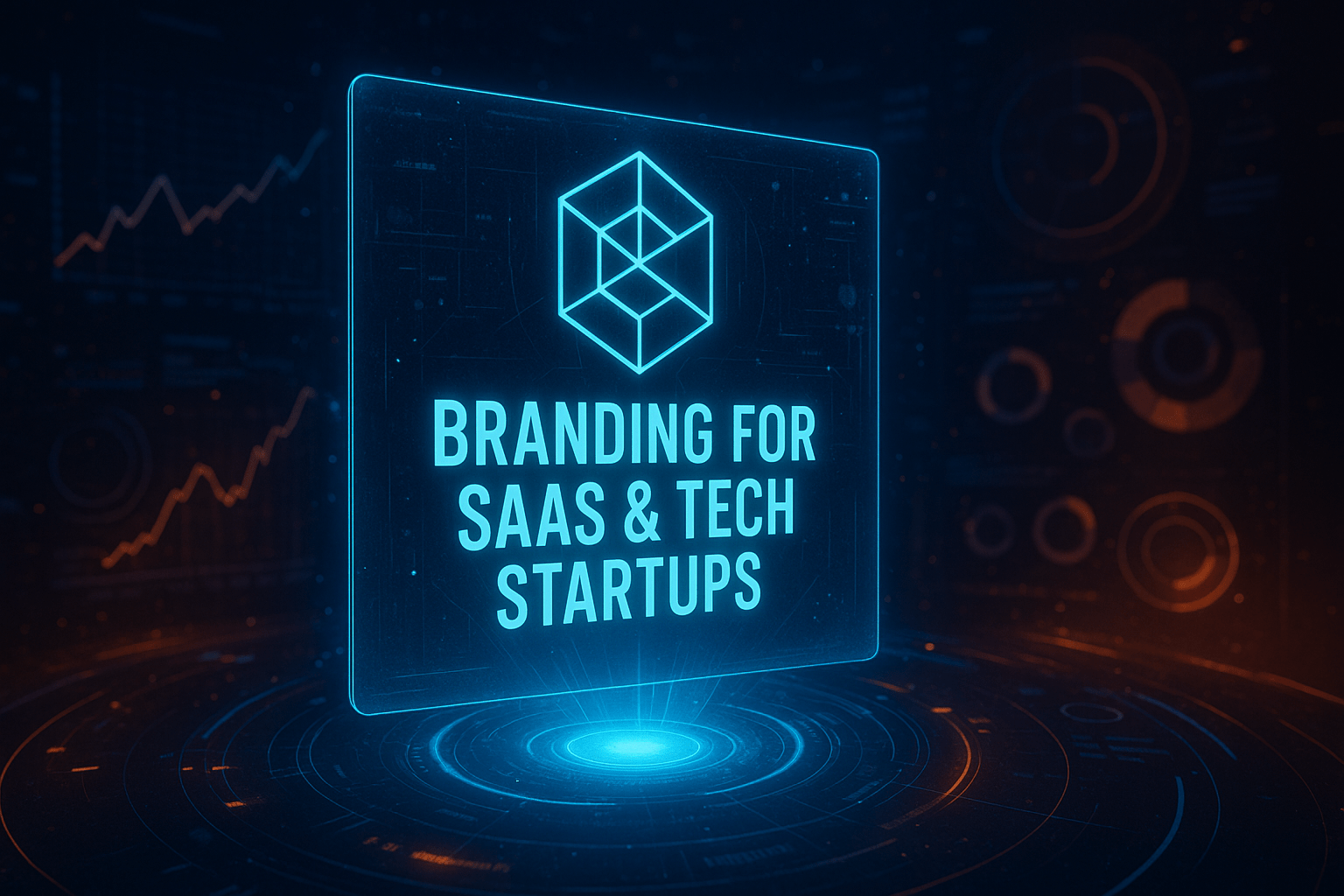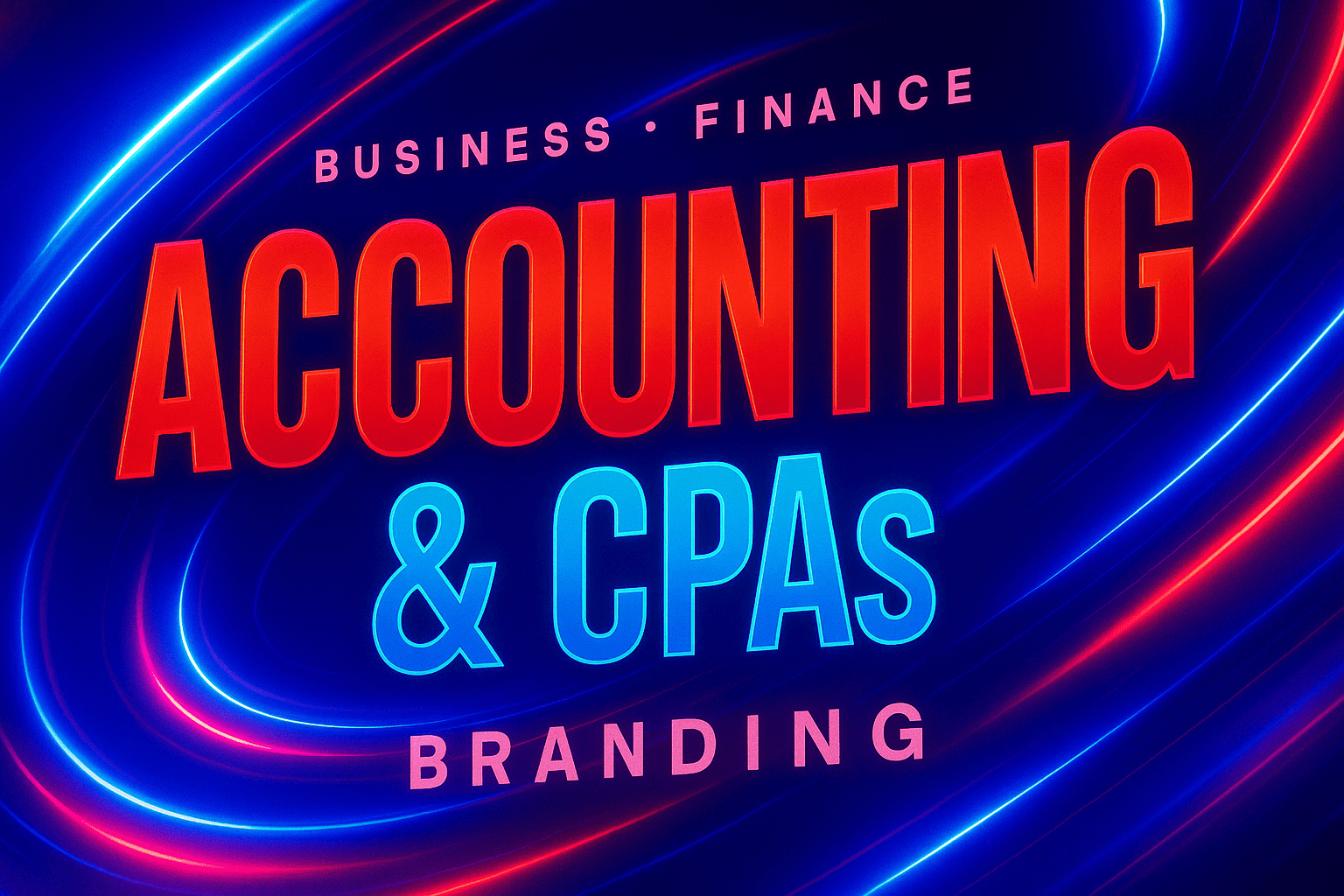Strategic Branding for Event Venues: Build Recognition, Drive Bookings & Stand Out
by Design Delulu Editorial · October 26, 2025

Smart, fast, and measurable. Here's how Branding helps Event Venues win.
Event venues operate in one of the most competitive markets imaginable. Whether you're managing a wedding venue, conference center, or multi-purpose event space, your brand is the deciding factor between a booked calendar and empty rooms. Strong branding doesn't just make you look professional—it builds trust, communicates value instantly, and gives prospects a compelling reason to choose your venue over countless alternatives.
The stakes are high because event bookings represent significant financial commitments for your clients. They're not just renting a space; they're investing in memories, business outcomes, and experiences that matter deeply. Your branding must immediately convey reliability, aesthetic appeal, and the unique atmosphere that makes your venue irreplaceable. Without a cohesive brand strategy, you're competing solely on price and availability—a race to the bottom that erodes profitability and attracts the wrong clients.

Why Event Venues Need Strategic Branding (Not Just a Logo)
Many venue owners confuse branding with logo design or picking color schemes. True branding for event venues encompasses your entire market position, messaging hierarchy, visual identity system, customer experience, and the emotional resonance you create at every touchpoint. It's the cumulative impression formed when someone encounters your website, visits your space, reads your proposals, and experiences your service delivery.
Brand strategy defines positioning. Are you the affordable option for budget-conscious couples, the luxury choice for corporate events, or the unique industrial loft for creative gatherings? Your positioning dictates pricing power, target audience, marketing channels, and competitive differentiation. Attempting to be everything to everyone dilutes your message and confuses prospects who need clarity to make confident booking decisions.
Visual identity creates instant recognition. Professional photography showcasing your space, consistent typography across all materials, thoughtful color palettes that reflect your venue's atmosphere, and cohesive design elements build familiarity. When prospects see your brand multiple times across different platforms, recognition accelerates trust and preference—critical factors in a high-consideration purchase like venue booking.
Messaging drives action. Your brand voice, value propositions, and storytelling approach determine whether prospects feel inspired or indifferent. Effective branding articulates not just what your venue offers, but why it matters to specific client segments. It addresses concerns proactively, highlights unique advantages, and creates emotional connections that transcend square footage and amenity lists.
The Financial Impact of Strong Venue Branding
- Premium pricing authority: Well-branded venues command 25-40% higher rates because clients perceive greater value and reduced risk
- Shorter sales cycles: Clear branding reduces decision friction, moving prospects from inquiry to deposit faster
- Higher conversion rates: Consistent brand experiences across touchpoints build confidence that converts more inquiries into bookings
- Reduced marketing costs: Strong brand recognition generates referrals and repeat bookings, lowering customer acquisition expenses
- Better client fit: Clear positioning attracts ideal customers whose needs align with your strengths, reducing difficult clients and scope creep
Core Components of Event Venue Branding
Building a comprehensive brand for your event venue requires systematic attention to multiple interconnected elements. Each component reinforces the others, creating a cohesive experience that builds market presence and drives bookings.
1. Brand Strategy Foundation
Before creating any visual assets or marketing materials, establish strategic clarity on these fundamental questions:
Positioning statement: Define exactly who you serve, what you provide, how you're different, and why prospects should believe you. This becomes your north star for all branding decisions. For example: 'The only historic mansion venue in the region specializing in intimate weddings under 150 guests, delivering personalized service impossible at larger facilities.'
Target audience segmentation: Identify your 2-3 primary client types with precision. Wedding couples seeking rustic elegance? Corporate planners needing downtown convenience? Non-profit organizations requiring affordable flexibility? Each segment has distinct needs, concerns, and decision criteria your branding must address.
Competitive differentiation: Understand exactly how you compare to alternatives in location, capacity, amenities, pricing, service model, and aesthetic. Your brand must amplify genuine advantages while managing weaknesses honestly. Trying to hide limitations creates misaligned expectations and disappointed clients.
Brand personality: Define the human characteristics your venue embodies. Sophisticated and elegant? Warm and welcoming? Modern and innovative? These personality traits inform visual design choices, copywriting tone, customer service standards, and every interaction.
2. Visual Identity System
Your visual identity makes your brand tangible and recognizable across all applications:
- Logo system: Primary logo, simplified versions for small applications, and clear usage guidelines ensuring consistency
- Color palette: 3-5 core colors reflecting your venue's atmosphere, plus neutral tones for flexibility and readability
- Typography: Headline and body fonts that reinforce personality while ensuring readability across print and digital
- Photography style: Consistent approach to lighting, composition, color treatment, and subject matter in all venue imagery
- Graphic elements: Patterns, icons, or decorative details that add visual interest and brand recognition
- Layout templates: Structured formats for proposals, marketing materials, and digital content ensuring professional consistency

3. Messaging Architecture
Strategic messaging ensures your brand communicates value clearly and persuasively:
Value proposition hierarchy: Lead with your most compelling benefit, then layer supporting advantages. Don't bury your strongest selling point in paragraph three of your website copy. If your venue offers the best outdoor ceremony space in your market, that leads the conversation.
Proof points and credentials: Awards, testimonials, capacity for high-profile events, years in business, unique architectural features—concrete evidence that validates your positioning claims and reduces prospect skepticism.
Objection handling: Anticipate common concerns (parking availability, weather backup plans, noise restrictions, catering limitations) and address them proactively in your messaging. Transparency builds trust faster than perfect-sounding promises.
Calls to action: Clear, specific next steps at every interaction point. 'Schedule a venue tour,' 'Download our pricing guide,' 'Check availability for your date'—direct language that moves prospects forward in the booking process.
4. Brand Experience Touchpoints
Your brand lives in every client interaction, not just marketing materials:
| Touchpoint | Branding Opportunity | Common Mistakes |
|---|---|---|
| Website | Showcase spaces with professional photography, streamline inquiry process, answer FAQs comprehensively | Poor mobile experience, slow loading, generic stock photos, buried contact information |
| Venue tours | Branded signage, preparation demonstrating attention to detail, staff embodying brand personality | Unprepared guides, cluttered spaces, inconsistent information across staff members |
| Proposals | Custom-branded documents, clear pricing, detailed timelines, personalized recommendations | Generic templates, confusing terms, missing details that trigger follow-up questions |
| Communication | Consistent tone, prompt responses, proactive updates, personalized attention | Slow replies, generic form emails, passing clients between multiple staff members |
| Event day | Seamless execution, staff in branded attire, thoughtful finishing touches | Disorganized setup, reactive problem-solving, inconsistent service quality |
The Strategic Branding Process for Event Venues
Effective venue branding follows a systematic approach that aligns creative work with business objectives and market realities.
Phase 1: Discovery & Strategic Foundation (Week 1-2)
Begin with comprehensive research and strategic planning that informs all subsequent creative work:
- Stakeholder interviews: Understand owner vision, staff perspectives, and long-term business goals for the venue
- Customer research: Analyze past client feedback, booking patterns, and common decision factors through surveys or interviews
- Competitive analysis: Evaluate 5-8 comparable venues on positioning, pricing, marketing approach, and perceived strengths
- Market assessment: Review local event trends, demand patterns, underserved segments, and pricing dynamics
- Brand audit: If rebranding, document existing brand assets, market perceptions, and what's working versus what needs evolution
This research phase typically reveals surprising insights—perhaps your venue attracts more corporate clients than weddings despite wedding-focused marketing, or maybe your perceived weakness (lack of on-site catering) actually appeals to clients wanting flexibility. Data-driven insights prevent expensive branding mistakes based on assumptions.
Phase 2: Brand Strategy Development (Week 2-3)
Transform research insights into actionable strategic direction:
Position mapping: Plot your venue against competitors on key dimensions (price vs. capacity, formal vs. casual, full-service vs. DIY-friendly) to identify differentiation opportunities and strategic white space.
Audience personas: Develop detailed profiles of your 2-3 primary client segments including demographics, psychographics, pain points, decision criteria, and preferred communication channels. Generic 'people planning events' won't drive focused branding.
Messaging framework: Create a structured hierarchy from core positioning statement through key messages, supporting points, and proof elements. This framework guides all copywriting while ensuring consistency across channels.
Brand personality definition: Select 3-5 personality traits that differentiate your venue and resonate with target audiences. Document how these traits manifest in visual design, communication style, and service delivery.
Phase 3: Visual Identity Creation (Week 3-5)
With strategy established, develop the visual language that brings your brand to life:
Concept development: Explore 2-3 distinct creative directions that interpret your brand strategy visually. Each direction includes preliminary logo options, color palettes, typography selections, and mood boards showing application examples.
Refinement: Select the strongest direction and refine all elements based on feedback, technical requirements, and application needs. Ensure logos work at small sizes, colors reproduce consistently across media, and typography remains readable in various contexts.
Brand guidelines: Document all visual standards including logo specifications, color values (RGB, CMYK, Pantone, hex), font usage rules, photography guidelines, and example applications. Comprehensive guidelines enable consistent implementation by you, your team, and external vendors.
Asset creation: Produce final logo files in all necessary formats, develop templates for common applications (proposals, presentations, social media), and create initial marketing materials demonstrating the complete system.
Phase 4: Implementation & Launch (Week 5-8)
Roll out your new brand systematically to maximize impact while minimizing disruption:
- Website redesign: Implement new branding on your primary digital presence first, as this touchpoint influences all others
- Marketing materials: Update brochures, venue guides, proposals, signage, and digital assets in priority order
- Photography refresh: Conduct professional photo shoot capturing venue spaces, details, and events in style consistent with new brand
- Staff training: Ensure team understands brand positioning, messaging, and how to embody brand personality in client interactions
- Launch communications: Announce rebrand to past clients, vendor partners, and market through coordinated email, social media, and PR outreach
Phased implementation prevents overwhelming your team while allowing adjustments based on early feedback. Monitor response carefully during launch period and refine messaging or creative elements showing unexpectedly weak performance.
Measuring Branding Impact on Venue Performance
Track specific metrics proving branding investments deliver measurable business results:
Leading Indicators (0-3 Months)
- Website engagement: Time on site, pages per session, bounce rate, inquiry form completion rate
- Inquiry quality: Percentage of inquiries matching your ideal client profile versus tire-kickers and poor-fit prospects
- Brand awareness: Direct website traffic, branded search volume, social media following growth
- Tour conversion: Percentage of venue tours resulting in booking, indicating brand promises align with reality
Business Results (3-12 Months)
- Average booking value: Revenue per event, indicating whether premium positioning enables higher pricing
- Booking conversion rate: Percentage of inquiries converting to confirmed bookings
- Sales cycle length: Average time from initial inquiry to signed contract and deposit
- Referral rate: Percentage of bookings originating from past client recommendations
- Customer acquisition cost: Marketing spend divided by new bookings, should decrease with stronger brand recognition
Strategic Outcomes (12+ Months)
- Market share growth: Your venue's booking volume relative to local competitors
- Price premium: Your rates compared to similar venues, quantifying positioning impact
- Client retention: Repeat bookings from corporate clients or referrals from wedding planners
- Brand equity: Unaided awareness and preference in your target market

Common Branding Mistakes Event Venues Make
Avoid these frequent pitfalls that undermine branding effectiveness:
Mistake 1: Trying to appeal to everyone. Venues attempting to serve weddings, corporate events, social gatherings, trade shows, and community meetings equally well end up with diluted messaging that resonates with no one. Focus on 2-3 primary segments you serve exceptionally well, then optimize your brand for those audiences.
Mistake 2: Leading with features instead of benefits. Your website prominently lists square footage, capacity numbers, and amenity features without connecting those specifications to meaningful client outcomes. Prospects don't book venues for abstract features—they want successful events that achieve specific goals.
Mistake 3: Inconsistent brand execution. Your website looks professional but proposals use generic templates, signage appears outdated, and staff communication lacks personality defined in brand guidelines. Inconsistency creates doubt about whether the venue delivers what the marketing promises.
Mistake 4: Poor photography quality. Using smartphone snapshots, poor lighting, unflattering angles, or cluttered compositions severely undermines premium positioning. Professional photography isn't optional for event venues—it's the primary tool for demonstrating value and sparking emotional connection.
Mistake 5: Ignoring negative brand signals. Outdated website design, slow inquiry responses, confusing pricing, or inconsistent online reviews create negative brand impressions that overshadow positive elements. Address weaknesses systematically rather than hoping strong points compensate.
Mistake 6: Copying competitor approaches. Researching competitors provides useful context, but mimicking their positioning or visual style prevents differentiation. Your brand should highlight what makes your venue uniquely valuable, not prove you're adequately similar to alternatives.
Industry-Specific Branding Strategies for Event Venues
Apply these proven approaches tailored specifically to event venue marketing dynamics:
Seasonal Positioning & Messaging
Event venue demand often follows seasonal patterns—wedding season peaks, corporate planning cycles, holiday party rushes. Your branding should flex strategically while maintaining core consistency. Develop seasonal messaging campaigns that emphasize relevant benefits (winter wedding intimacy, summer outdoor celebrations, corporate year-end gatherings) without requiring wholesale brand changes.
Partnership Brand Leverage
Event venues rarely operate in isolation. Strategic partnerships with preferred caterers, photographers, planners, and rental companies extend your brand reach and add credibility. Develop co-branded materials showcasing these relationships, highlighting how your venue network delivers comprehensive solutions reducing client stress and decision burden.
Experience-First Content Strategy
Rather than describing your venue abstractly, showcase real events through detailed case studies, photo galleries, and client testimonials that demonstrate outcomes. Let prospects visualize their event in your space by seeing similar events succeed. This approach builds confidence more effectively than feature lists ever could.
Niche Specialization Advantage
Consider positioning as the dominant venue for a specific event type in your market rather than competing as a generalist. 'The premier corporate retreat venue' or 'The destination for rustic barn weddings' creates clear preference with target segments even if it means consciously deprioritizing other opportunities. Specialization enables premium pricing and more efficient marketing.
Virtual Tour Integration
Comprehensive 360-degree virtual tours or video walkthroughs extend your brand experience to prospects unable to visit immediately. High-quality virtual tours qualify prospects effectively, reduce unproductive physical tours, and demonstrate transparency that builds trust. Ensure virtual content maintains brand consistency in quality and presentation style.
Maintaining Brand Consistency as Your Venue Evolves
Strong brands remain relevant through intentional evolution while preserving core identity:
Annual brand audits: Review all brand touchpoints annually, assessing consistency, effectiveness, and alignment with current business strategy. Update materials showing wear, refresh photography capturing recent improvements, and refine messaging based on what resonates best.
Staff brand training: Onboard new team members with comprehensive brand education, explaining not just what your brand looks like but why it positions your venue strategically. Empower staff to make decisions aligned with brand values rather than requiring constant managerial approval.
Customer feedback integration: Regularly survey clients about brand perceptions, asking what attracted them initially and whether experience matched expectations. Address gaps between brand promise and delivery immediately—no amount of polished marketing overcomes disappointing experiences.
Competitive monitoring: Track competitor positioning, messaging, and visual approaches quarterly. Identify emerging trends in venue marketing while ensuring your brand maintains differentiation. Being aware of market shifts allows proactive brand evolution rather than reactive repositioning.
Refresh vs. rebrand decisions: Minor updates (new photography, refined messaging, template redesigns) keep brands fresh without confusing established audiences. Complete rebrands suit major business pivots (new ownership, expanded services, repositioning to different segments). Most venues need refreshes every 3-5 years and complete rebrands every 10-15 years.
Frequently Asked Questions
Let’s level up your Event Venues business
Need services that actually move the needle for Event Venues? See our approach, pricing, and timelines—then book a quick call.
Additional Resources
- Schedule a Venue Branding Consultation
Book a complimentary 30-minute strategy call to discuss your venue's branding needs, positioning challenges, and growth objectives. Get expert guidance on timeline, investment, and expected outcomes.
- View Our Event Venue Branding Portfolio
Explore completed branding projects for event venues, wedding venues, conference centers, and hospitality spaces. See strategy, visual identity systems, and measurable results from real client engagements.
- Free Event Venue Marketing Tools
Access complimentary resources including brand audit checklists, messaging templates, photography planning guides, and competitive analysis frameworks designed specifically for event venue operators.
Related Reading

Master advanced branding for SaaS & tech startups with proven frameworks, positioning strategies, and scalable systems that drive growth and customer loyalty.

Transform your electronics retail brand with proven strategies. Get tracking, dashboards, and attribution models that drive measurable growth in 4-8 weeks.
